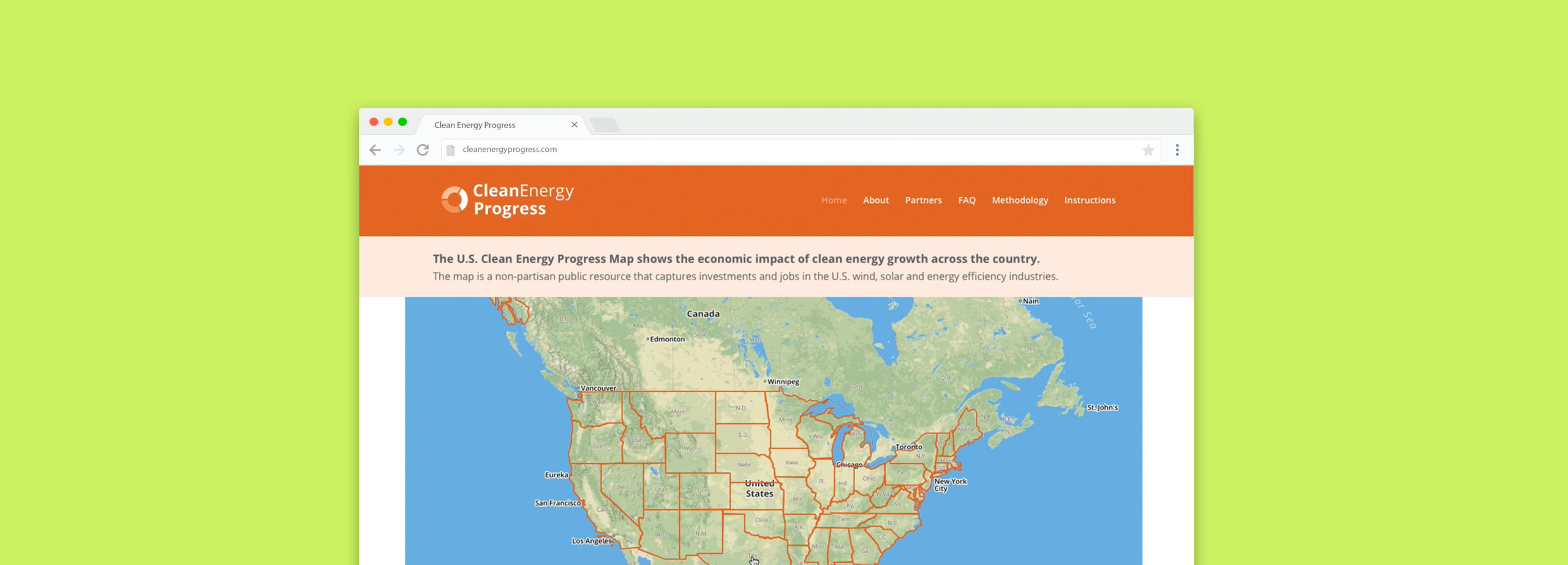A coalition of industry-leading organizations, including the Alliance to Save Energy and the Environmental Defense Fund, was preparing to launch a first-of-its-kind resource: the U.S. Clean Energy Progress Map. The map was created to provide citizens and policymakers with unprecedented access to data on the economic impact of clean energy around the U.S.
Challenge
The coalition needed a partner to lead the charge in developing a strategic communications strategy for getting the word out about the map, starting with positioning the map’s value, creating key messages that connected with audiences, and coordinating launch efforts between the seven contributing organizations. Additionally, the map’s sponsors needed to be prepared to answer tough questions about both the project and renewable energy policy, once the map went live. Conversations about clean energy can be contentious, even around non-partisan data sources. That’s where INK came in.

Solution
Leaning on our decade of clean energy expertise, we built an integrated campaign that conveyed the map’s value and voice and provided sponsors with the confidence and resources needed to push it out to the right stakeholders. INK created dozens of communications resources to help the coalition of organizations launch and promote the map without a hitch, including a press kit, media protocol document, social copy, and messaging for each partner.
The unique aspect of the media relations strategy for this launch? Our media contacts were also a target audience. Our media outreach needed to both result in coverage for the map and establish it as an excellent resource for clean energy journalists. In the end, we held demos with journalists at publications like Bloomberg and Vox.
Results
Our launch campaign garnered coverage in publications like Politico and Renewable Energy Magazine. And within a month of launch, the map received nearly 6,000 visitors, 80 percent of those from direct traffic and 9 percent from social media referrals, which is double the industry norm. Additionally, website traffic showed visitors from influential advocacy groups like the National Renewable Energy Laboratory, the EPA, and the U.S. House of Representatives.
However, the real win was helping to educate the country about the massive economic impact clean energy provides to the U.S. each year. And in turn, empowering Americans to work toward continued clean energy progress.




